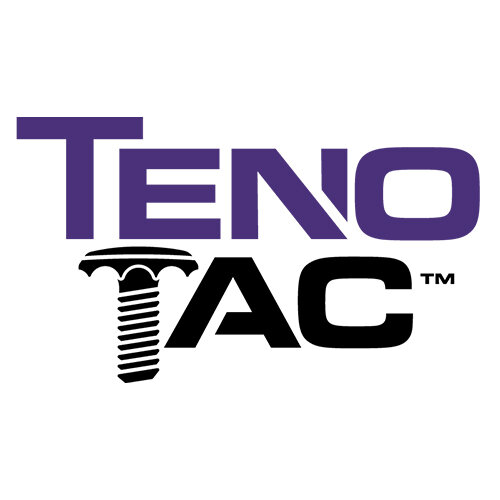
Frequently Asked Questions
Why was this procedure developed?
TenoTac was developed as an alternative surgical approach to correct complex deformities of the toe, such as hammertoes and tendon instability. The TenoTac procedure addresses the root cause of these deformities while avoiding fusion and bony cuts.
What do you mean by less invasive?
TenoTac is a minimally invasive surgery, meaning that the incisions created are only slightly larger than the implant. Relative to other tendon transfer and fusion procedures, the TenoTac procedure in isolation allows for a shorter incision to be made by the surgeon.
Why have I not been offered a TenoTac procedure before? Is it new?
The TenoTac procedure and implant were developed by Dr. Douglas Blacklidge, DPM in conjunction with Paragon 28. This innovative system launched in February 2019. The procedure is new and was developed to address the shortcomings of other techniques and technologies used when correcting toe deformities.
Will this procedure limit my mobility moving forward?
The TenoTac procedure preserves attachments sites of the tendons which run along the bottom and top of your toe. Immediately following the procedure, you will find that you will still have some flexibility in the toe. Keep in mind with most other procedures, there is very limited control as bones have either been fused or tendons have been released.
Is the TenoTac procedure covered by insurance?
Coverage is dependent upon the provider. The TenoTac procedure is a tissue balancing procedure which is generally covered by insurers.
Can I have operations done on multiple toes at one time? Can I have both feet operated on?
Lesser toe deformities may develop across multiple toes and in some cases, across both feet. TenoTac corrections are frequently being completed on multiple toes and have been completed on both feet in cases deemed necessary. Your surgeon will be able to make a specific judgment based on your condition.
If I had a previous operation that failed, can I receive a TenoTac procedure?
Absolutely! Surgeons are using the TenoTac system to address a multitude of previous operations such as floating toe resulting from previous shortening procedures intended to straighten the toe, restoring stability following Plantar Plate surgery, and more!
Do all doctors perform the TenoTac procedure?
Surgeons are being trained every week on this novel procedure. To find a surgeon near you, please utilize our surgeon finder tool located here.
Are there physical limitations I should be aware of following the surgery?
Physical limitations will be different for all patients, and the course of treatment your surgeon chooses post-operatively will vary. Common limitations immediately following surgery may include but are not limited to the following: casting of the foot, non-weightbearing in a boot or stiff post-operative shoe, not being able to operate a vehicle, avoidance of getting the surgical site wet. Your surgeon will be able to determine the best possible post-operative course for you.
Will I have any scarring following the procedure?
A small scar at the base of the toe both on the top and bottom of the foot will be present. Scarring may take longer to completely soften with up to a year for full remodeling.
When can I return to all normal activities following surgery?
Restrictions related to activity may be lifted six weeks after the operation depending on your specific case. Your surgeon will be able to lay out a more accurate timeline for you.


